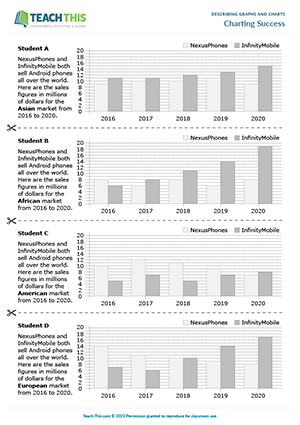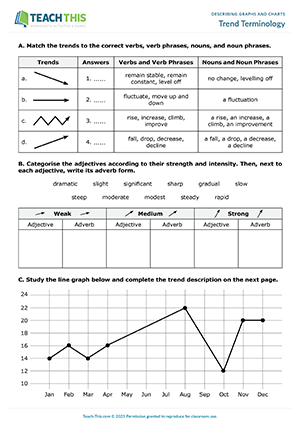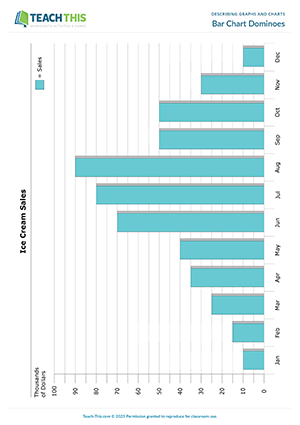Describing Graphs and Charts - Business English Activities and Worksheets
In this productive describing charts and trends activity, students describe sales figures and trends in bar charts. First, in groups, each student completes a table on their worksheet with sales figures of two Android phone manufacturers shown in a bar chart. Each student then describes their bar chart showing the sales figures for each company over five years to the other students, who complete their tables with the numbers. e.g. 'Here are the sales figures for NexusPhones in Asia. In 2016, sales were nine million dollars. In 2017, sales rose slightly to ten million, etc...' When the students have finished, they write sentences describing the trends in sales for each company in the different regions and then the overall global trend, e.g. 'Sales in Asia have remained stable with slight increases and decreases over the five years.' Finally, students share their sentences with the group to check they all have similar trends for each region.
In this free describing graphs and trends speaking activity, students describe and draw trends in a line graph. In pairs, Student A begins by describing a line graph showing a company's profits in millions of dollars, over a 12-month period to their partner, who listens and draws the graph on their worksheet, e.g. 'In January, the company's profits were 11 million dollars. In February, there was a steady rise in profits from 11 million to 12 million dollars. In March, profits increased dramatically from 12 million to 15 million, etc...' When the students have finished, Student B describes a line graph showing a company's turnover in millions of dollars, over a 10-year period to Student A, who listens and draws the graph. Afterwards, students compare their graph with their partner to check they have drawn it correctly.
In this useful describing trends worksheet, students practice verbs, nouns, adjectives and adverbs that describe trends. Students begin by matching symbols that show trend directions to verbs, verb phrases, nouns, and noun phrases. Next, students categorise adjectives according to their strength and intensity - weak, medium, or strong. Students then write the adverb form of each adjective. After that, students study a line graph showing the annual sales for a new product and complete a description describing the trend over the year. Finally, students study a second line graph and create their own trend description using the language from the worksheet.
In this describing bar charts game, students use a picture to match dominoes together and form a description of a bar chart and its trend. The first player looks at the bar chart to see what part of the trend is being described on the domino on the table. The player then puts a domino down either before or after the domino on the table, making sure that the two parts of the sentence match to continue describing the trend according to the bar chart. It's then the other player's turn to match a domino in the same way by putting one down at either end of the domino chain, and so on. If a player cannot put down one of their dominoes, they take a domino from the top of the pile and put it down if they can. If there are no dominoes left in the pile, play passes to the other student. The first player to get rid of all their dominoes wins the game.








